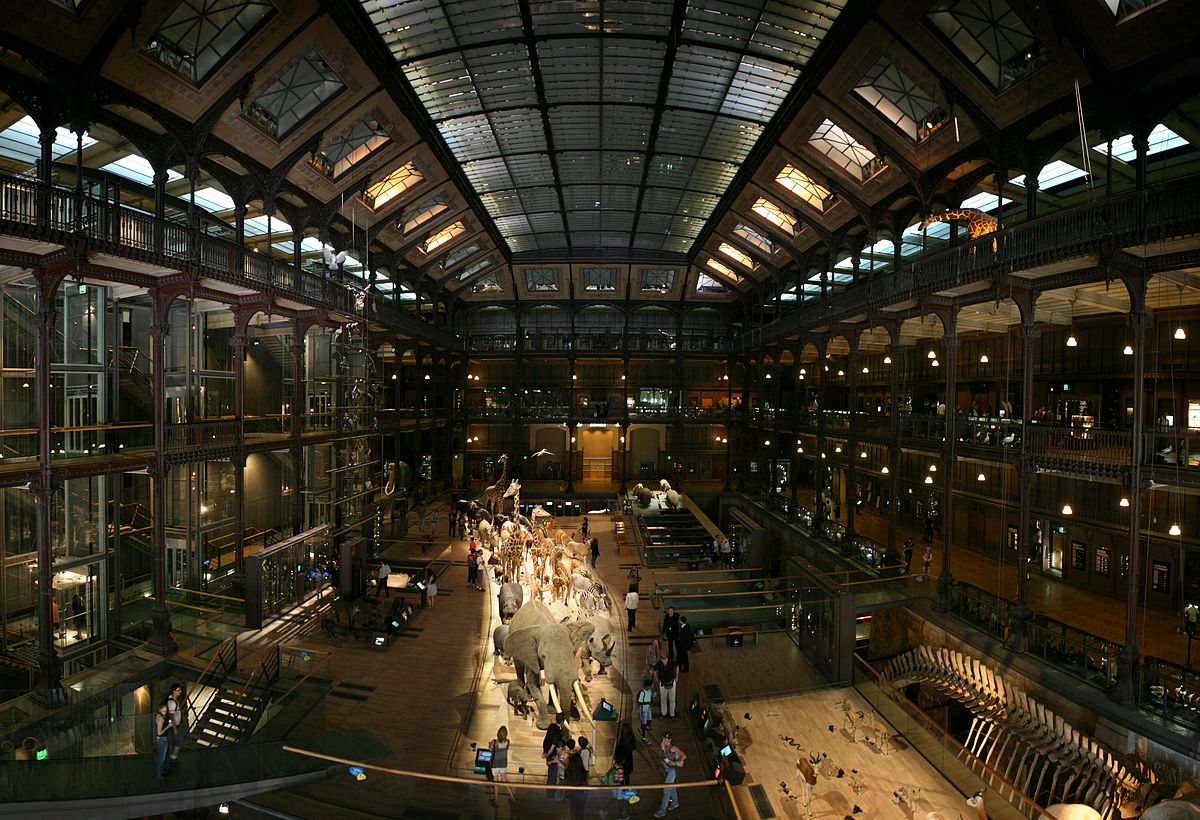
The Muséum National d’Histoire Naturelle (MNHN) was founded during the French Revolution in 1793, although it succeeds the royal garden of medicinal plants created in 1635. The museum has 12 sites across France, with three in Paris, including the main Jardin des Plantes. It is a grand établissement of higher education, and is associated with Sorbonne University. The collection of the Museum is among the top three natural history institutions in the world, and the Museum is the formal repository for all national natural history collections.
The Museum’s collection contains some 68 million specimens and more than 835,000 primary types and reference specimens. Natural history collections from France are made available via the RECOLNAT infrastructure. This infrastructure is in development and administrated by the MNHN. These collections were developed to an outstanding degree during the nineteenth and twentieth centuries following the numerous historic investigations made on all continents (mainly in Africa and Asia) but also in all seas and oceans (through oceanographic explorations).
Most of the collections are arranged in such a way that desired specimens could easily be communicated and examined. The Fishes collection is entirely digitized; the Herbarium is entirely scanned; some other collections are in progress with an emphasis on type and reference specimens. The main strength is the number of type specimens that are crucial for the modern taxonomist. More than three centuries of collects is a wealth resource in the biodiversity changes investigations. This makes them a key research infrastructure to better document climate change and all new challenges emerging in the field of biodiversity.
The main repository of collection items are at the MNHN, whose collections are situated in different buildings located in three major areas in the Paris Center:
- Jardin des Plantes and the Buffon-Poliveau sector: this houses the collections of zoology, botany, paleontology, geology, mineralogy and biological resources. The Zoothèque is an underground facility devoted exclusively to zoological collections and includes preparation and conditioning laboratories and study spaces for visiting scientists. Large instruments used to study collections (molecular biology laboratories, scanning electron microscopes, mass spectrometers, CTscan) are also located in the Jardin des Plantes.
http://www.museedelhomme.fr/en
Musée de l’Homme: this houses the anthropology and the prehistory collections, as well as a DNA laboratory a 2D and 3D scanning facility."
- Musée de l’Homme: this houses the anthropology and the prehistory collections, as well as a DNA laboratory a 2D and 3D scanning facility.
- Institut de Paléontologie Humaine: this houses Human paleontology and Quaternary geological collections. On a worldwide basis, it houses a rich osteological collection as well as recent bone collections.
FR-TAF offers full access to the collections installations, facilities and staff expertise. Most of the collections are held in the three-core repository buildings based in Paris. These three repositories are available for Virtual and Physical access. All facilities provide tools for DoD, and devoted space and basic equipment to perform observations. Most have Scanning Electron Microscope facilities. Other facilities include a Transmission Electron Microscope platform, 3D imaging (surface and CT scans), a biomolecular laboratory for DNA extraction. FR-TAF also provides access to documentation both on-site (MNHM houses the only national library devoted exclusively to natural history) and off-site with an online catalogue and access to major bibliographic databases.
FR-TAF staff possess expert knowledge in a vast array of zoological, botanical, and geological disciplines. In many cases, they are world-leading experts in their fields and/or represent unique or rare expertise in Europe.
FR-TAF collections are digitized, ranging from metadata information of subsets of collections to specimen images and databases. Digitized images of FR-TAF are directly accessed through the Science Database (https://science.mnhn.fr/all/search) or for other French collections and tools Recolnat (https://explore.recolnat.org/).
MHNH acts as the French national agency for European programs and is the National Reference Centre for Biodiversity.
In 2017, 843 visitors accessed the MNHN collection; 53% originated from France, 22% from other European countries, and 25% from other nations around the world.
Please browse MNHN collection databases to check for collections here: https://www.mnhn.fr/en/collections
Paris, France
http://www.mnhn.fr
Contacts:
Magalie Castelin magalie.castelin@mnhn.fr
Florian Ragot florian.ragot@mnhn.fr
Transnational Access: synthesysta@mnhn.fr
Virtual Access: synthesysva@mnhn.fr
Paris, France
http://www.mnhn.fr